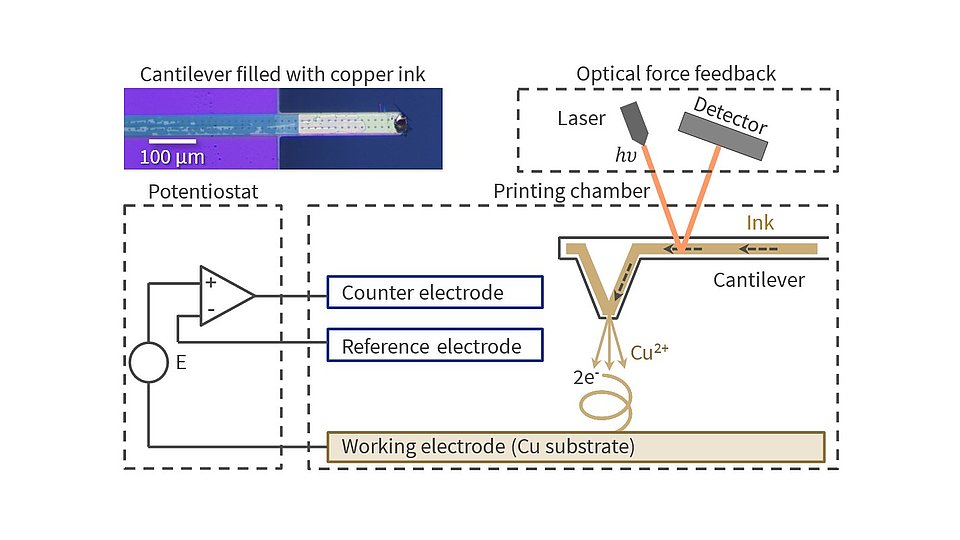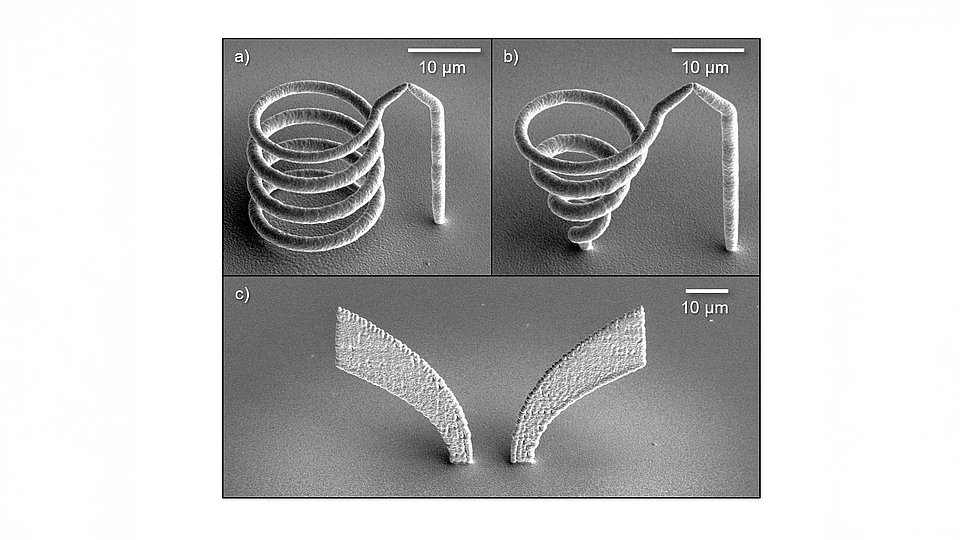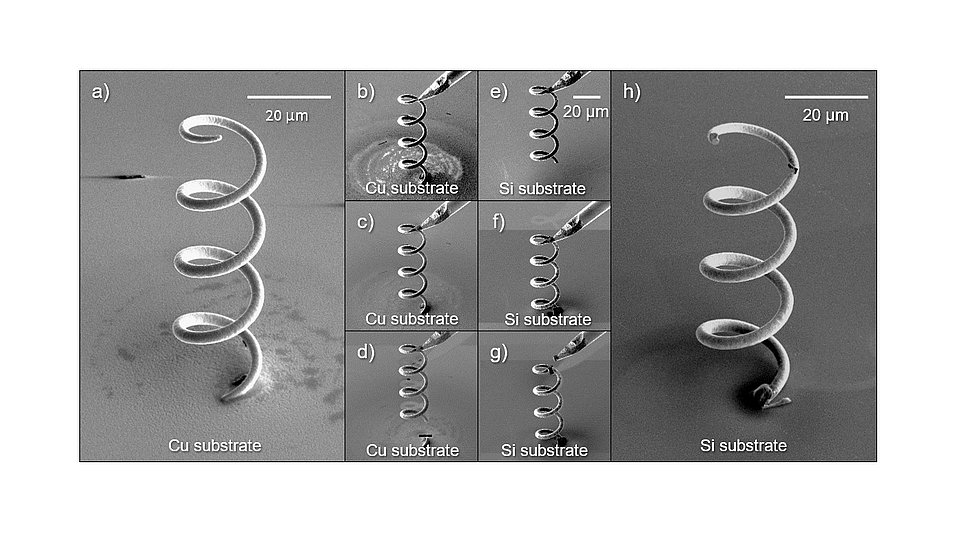Advanced 3D printing for broadband terahertz micro-antennas
Fig. 2: Secondary electron micrographs of printed copper helical antennas (a and b) and a Vivaldi antenna (c).
The short wavelengths and non-destructive properties of terahertz-frequency electromagnetic radiation enable applications across fields such as medical imaging, spectroscopy, and high-speed communications. Integrating this technology into compact devices requires on-chip antennas capable of transmitting and receiving sub-millimeter wavelengths. However, conventional lithographic processes are inherently limited to 2 dimensions which in turn reduces design flexibility and results in the antenna footprint typically occupying costly chip area. We have therefore established a fabrication protocol based on direct 3D printing and in-situ transfer to realize free-standing metallic micro-antennas that offer broadband and highly directional radiation with a significantly reduced footprint.
The additive micromanufacturing of metallic structures is based on localized electrodeposition process in an Exaddon Ceres system as schematically illustrated in Fig. 1. The printing setup consists of an electrochemical cell, where a negatively charged working electrode acts as the substrate for deposition. A hollow atomic force microscopy (AFM) cantilever, filled with metal ions dissolved in an electrolyte solution, delivers the printing ink to the substrate. As the cantilever approaches the surface, pressure is applied to the ink, leading to the reduction of metal ions on the substrate. An optical force feedback loop detects the formation of a printed voxel. The shape of the printed structure is defined by the movement path of the cantilever, while the thickness is controlled by the applied pressure. Fig. 2 presents secondary electron micrographs of free-standing helical and Vivaldi micro-antennas from copper fabricated with this technique.
Since this 3D printing process is feasible only on highly conductive substrates, direct growth of metallic microstructures onto integrated circuit devices is not possible. To address this limitation, fabricated antennas can be transferred onto a chip by a pick-and-place approach using a focused ion beam (FIB) for cutting and bonding of the structures. While FIB milling locally removes material by physical sputtering, focused ion beam induced deposition (FIBID) forms a localized deposit due to ion-induced dissociation of gaseous precursor molecules adsorbed on the surface.
To perform the transfer, a micro-antenna printed on conductive substrate (Fig. 3a) is loaded into a dual-beam FIB-SEM system and bonded to a micromanipulator tip via FIBID (Figs. 3b-c). Its base is then cut (Fig. 3d) and the antenna is subsequently positioned on the target chip (Fig. 3e). After bonding to the surface it is detached from the micromanipulator (Figs. 3f-g). Fig. 3h depicts the successfully transferred copper helical antenna onto the surface of a silicon chip.
This micromanufacturing technique enables the fabrication of metallic antennas with complex 3D shapes expanding the range of possible designs for high-speed communication circuit elements. Additionally, the developed pick-and-place transfer workflow allows for the integration of these structures into semiconductor chip architectures.
This work is a collaborative effort between three Joint Labs at FBH (Photonic Quantum Technologies, Terahertz Components & Systems, and InP Devices) and the Institute of Microwave Engineering at Ulm University for antenna design.
Publications
G. Ercolano, C. van Nisselroy, T. Merle, J. Vörös, D. Momotenko, W. Koelmans, T. Zambelli, “Additive Manufacturing of Sub-Micron to Sub-mm Metal Structures with Hollow AFM Cantilevers”, Micromachines, 11(1), 6 (2019). https://doi.org/10.3390/mi11010006
K. Höflich, G. Hobler, F. I. Allen, T. Wirtz, G. Rius, L. McElwee-White, A. v. Krasheninnikov, M. Schmidt, I. Utke, N. Klingner, M. Osenberg, R. Córdoba, F. Djurabekova, I. Manke, P. Moll, M. Manoccio, J. M. de Teresa, L. Bischoff, J. Michler, G. Hlawacek, “Roadmap for focused ion beam technologies”, Applied Physics Reviews, 10(4) 2023. https://doi.org/10.1063/5.0162597
T. Galler, P. Hügler, T. Chaloun, C. Waldschmidt, ”Dielectric Rod Antenna for Glass- Packaged Radar Sensors at G-band”, 14th German Microwave Conference (GeMiC) 2022, ISBN: 978-3-9820397-2-5.
M. Geiger, S. Gut, P. Hügler, C. Waldschmidt, “Flexible Radar Front End with Multimodal Transition at 300 GHz”, IEEE/MTT-S International Microwave Symposium (IMS) 2020. https://doi.org/10.1109/IMS30576.2020.9224051


